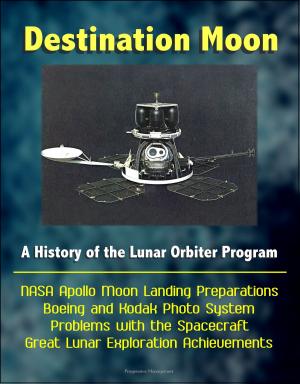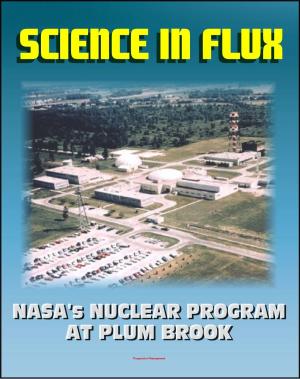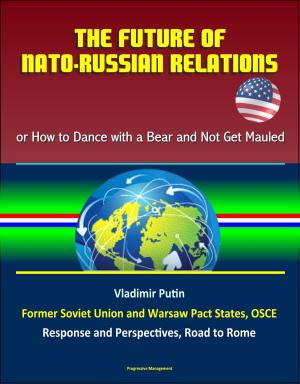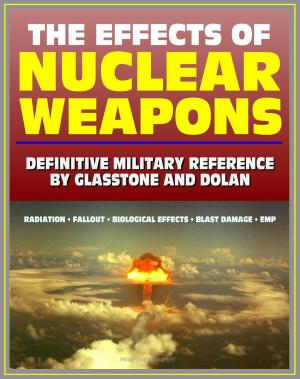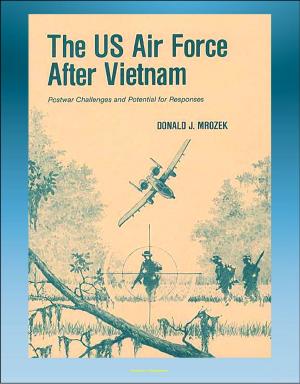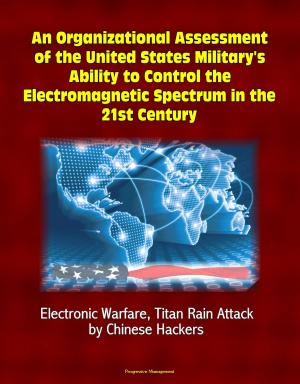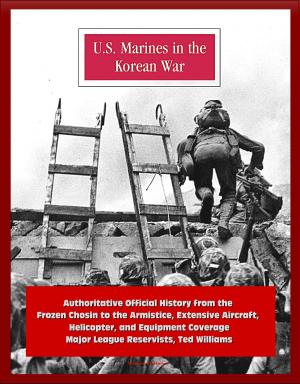Cordon of Steel: The U.S. Navy and the Cuban Missile Crisis - President John F. Kennedy, Nikita Khrushchev, Admiral Dennison, U-2, Fidel Castro, SS-4 Sandal and SS-5 Skean Soviet Missiles
Fiction & Literature, Literary Theory & Criticism, Caribbean & West Indian, Nonfiction, History, Military, Naval| Author: | Progressive Management | ISBN: | 9781301539963 |
| Publisher: | Progressive Management | Publication: | February 11, 2013 |
| Imprint: | Smashwords Edition | Language: | English |
| Author: | Progressive Management |
| ISBN: | 9781301539963 |
| Publisher: | Progressive Management |
| Publication: | February 11, 2013 |
| Imprint: | Smashwords Edition |
| Language: | English |
In the fall of 1962, the United States and the Soviet Union came as close as they ever would to global nuclear war. Hoping to correct what he saw as a strategic imbalance with the United States, Soviet Premier Nikita S. Khrushchev began secretly deploying medium range ballistic missiles (MRBM) and intermediate range ballistic missiles (IRBM) to Fidel Castro's Cuba. Once operational, these nuclear-armed weapons could have been fired against cities and military targets in most of the continental United States. Before this happened, however, U.S. intelligence discovered Khrushchev's brash maneuver. In what became known as the Cuban Missile Crisis, President John F. Kennedy and an alerted and aroused American government, armed forces, and public compelled the Soviets to remove from Cuba not only their missiles but all of their offensive weapons. The U.S. Navy played a pivotal role in this crisis, demonstrating the critical importance of naval forces to national defense. The Navy's operations were in keeping with its strategic doctrine, which is as valid today as it was in late 1962. The Navy, in cooperation with the other U.S. armed forces and with America's allies, employed military power in such a way that the president did not have to resort to war to protect vital Western interests. Khrushchev realized that his missile and bomber forces were no match for the Navy's powerful Polaris ballistic missile-firing submarines and the Air Force's land-based nuclear delivery systems once these American arms became fully operational. Naval forces under the U.S. Atlantic Command, headed by Admiral Robert L. Dennison (CINCLANT), steamed out to sea, intercepting not only merchant shipping en route to Cuba, but Soviet submarines operating in the area as well. U.S. destroyers and frigates, kept on station through underway replenishment by oilers and stores ships, maintained a month-long naval "quarantine" of the island of Cuba. Radar picket ships supported by Navy fighters and airborne early warning planes assisted the U.S. Air Force's Air Defense Command in preparing to defend American airspace from Soviet and Cuban forces. Navy aerial photographic and patrol aircraft played a vital part not only in observing the deployment of Soviet offensive weapons into Cuba but monitoring their withdrawal by sea.
The purpose of the series is to inform today's naval personnel and other readers of the contributions made by the naval service to the nation, in war and peace, since 1945. During this period, the Navy contained Soviet and Communist expansion, deterred nuclear and conventional attack on the United States, protected American trade at sea and ashore, strengthened regional alliances, and fostered the growth of democratic and free market institutions worldwide. The strength and overseas presence of the U.S. fleet often resolved crises without the use of force, but when force was necessary the Navy fought hard and well.
Subjects and topics include: President John F. Kennedy, Nikita Khrushchev, Anatoly Dobrynin, Adlai Stevenson, Admiral Dennison, Robert F. Kennedy, U-2, John Scali, Essex (CVSA), Fidel Castro, Major Rudolf Anderson,, Vought F8U-1P Crusader, General Curtis LeMay, John A. McCone, SS-4 Sandal missiles, SS-5 Skean missiles, General Maxwell D. Taylor, Dean Rusk, Andrei Gromyko, Destroyer Willard Keith (DD775)
In the fall of 1962, the United States and the Soviet Union came as close as they ever would to global nuclear war. Hoping to correct what he saw as a strategic imbalance with the United States, Soviet Premier Nikita S. Khrushchev began secretly deploying medium range ballistic missiles (MRBM) and intermediate range ballistic missiles (IRBM) to Fidel Castro's Cuba. Once operational, these nuclear-armed weapons could have been fired against cities and military targets in most of the continental United States. Before this happened, however, U.S. intelligence discovered Khrushchev's brash maneuver. In what became known as the Cuban Missile Crisis, President John F. Kennedy and an alerted and aroused American government, armed forces, and public compelled the Soviets to remove from Cuba not only their missiles but all of their offensive weapons. The U.S. Navy played a pivotal role in this crisis, demonstrating the critical importance of naval forces to national defense. The Navy's operations were in keeping with its strategic doctrine, which is as valid today as it was in late 1962. The Navy, in cooperation with the other U.S. armed forces and with America's allies, employed military power in such a way that the president did not have to resort to war to protect vital Western interests. Khrushchev realized that his missile and bomber forces were no match for the Navy's powerful Polaris ballistic missile-firing submarines and the Air Force's land-based nuclear delivery systems once these American arms became fully operational. Naval forces under the U.S. Atlantic Command, headed by Admiral Robert L. Dennison (CINCLANT), steamed out to sea, intercepting not only merchant shipping en route to Cuba, but Soviet submarines operating in the area as well. U.S. destroyers and frigates, kept on station through underway replenishment by oilers and stores ships, maintained a month-long naval "quarantine" of the island of Cuba. Radar picket ships supported by Navy fighters and airborne early warning planes assisted the U.S. Air Force's Air Defense Command in preparing to defend American airspace from Soviet and Cuban forces. Navy aerial photographic and patrol aircraft played a vital part not only in observing the deployment of Soviet offensive weapons into Cuba but monitoring their withdrawal by sea.
The purpose of the series is to inform today's naval personnel and other readers of the contributions made by the naval service to the nation, in war and peace, since 1945. During this period, the Navy contained Soviet and Communist expansion, deterred nuclear and conventional attack on the United States, protected American trade at sea and ashore, strengthened regional alliances, and fostered the growth of democratic and free market institutions worldwide. The strength and overseas presence of the U.S. fleet often resolved crises without the use of force, but when force was necessary the Navy fought hard and well.
Subjects and topics include: President John F. Kennedy, Nikita Khrushchev, Anatoly Dobrynin, Adlai Stevenson, Admiral Dennison, Robert F. Kennedy, U-2, John Scali, Essex (CVSA), Fidel Castro, Major Rudolf Anderson,, Vought F8U-1P Crusader, General Curtis LeMay, John A. McCone, SS-4 Sandal missiles, SS-5 Skean missiles, General Maxwell D. Taylor, Dean Rusk, Andrei Gromyko, Destroyer Willard Keith (DD775)

